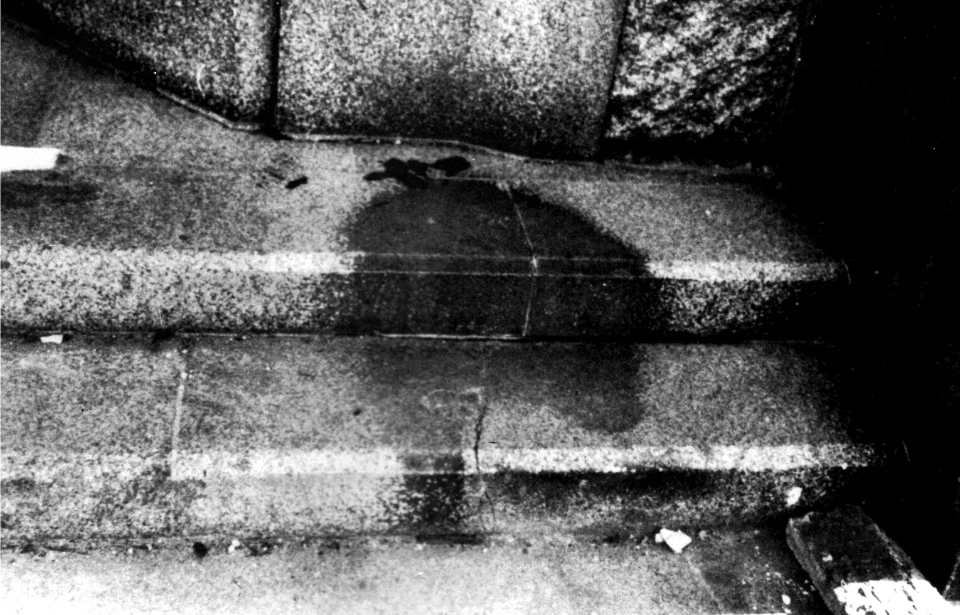There were many scars left behind in Japan after the Americans dropped the atomic bombs over Hiroshima and Nagasaki. The explosions had lasting effects on not only both countries, but the rest of the world. Today, there remain visuals of what occurred in Japan, in the form of human shadows etched in stone.
Dropping the atomic bombs on Hiroshima and Nagasaki
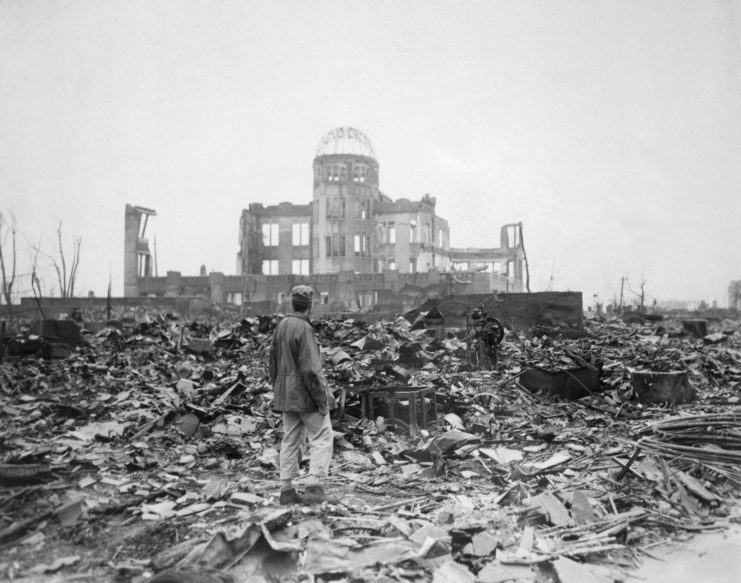
On August 6, 1945, the United States dropped the atomic bomb Little Boy on Hiroshima. Three days later, the country’s forces dropped another, nicknamed Fat Man, over Nagasaki. The explosion caused by Little Boy was equivalent to 15,000 tons of TNT, while Fat Man‘s was equal to 21,000 tons.
Both sent a pulse of thermal energy throughout their respective cities, flattening roughly five and three square miles, respectively. The explosions were created through nuclear fission – when a neutron hits the nucleus of a heavy atom, like the Uranium-235 in Little Boy or the Plutonium-239 in Fat Man, breaking apart the element’s nucleus and releasing a large amount of energy.
In Hiroshima, roughly 70,000-135,000 people died either instantly or from the effects of radiation poisoning in the months following the dropping of Little Boy. In Nagasaki, approximately 60,000-80,000 individuals died. Shortly after, on August 15, Emperor Hirohito announced Japan’s surrender. The official declaration was signed on September 2, 1945.
Sumitomo Bank
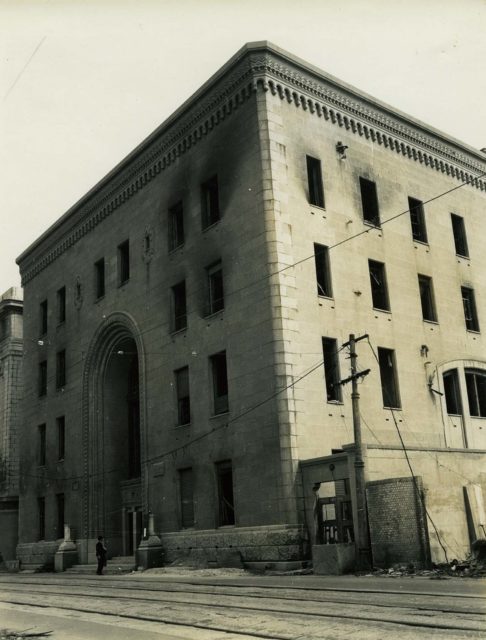
The Hiroshima branch of Sumitomo Bank was built in 1928 from reinforced concrete. On August 6, 1945, it was planning to open as usual. Several workers had already arrived and were preparing to welcome patrons, while others were still en route. The doors had yet to open to the public.
That morning, an unidentified person was sat upon the stone steps at the bank’s entrance, waiting for it to open. At 8:15 AM, Little Boy was dropped from the Boeing B-29 Superfortress Enola Gay, and, 45 seconds later, detonated 260 meters away.
The exterior of the bank remained relatively intact, considering an atomic bomb had exploded so close to it. However, the interior was completely destroyed. Of the employees already inside and those on their way to work, 29 were killed instantly, and many of the survivors later died from radiation sickness.
Human shadow on the steps of Sumitomo Bank
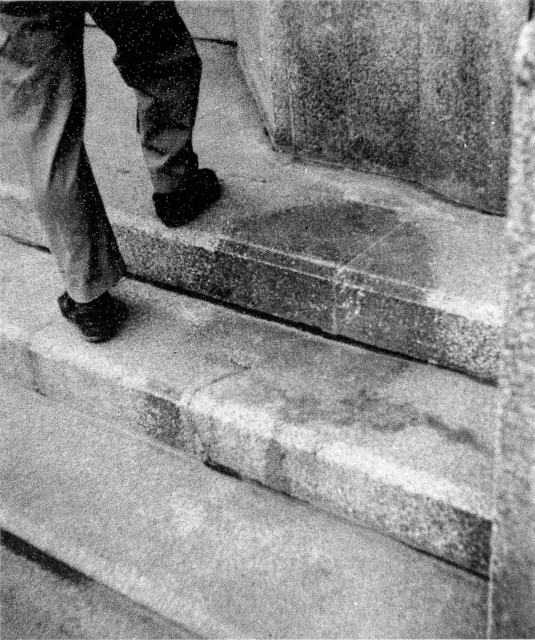
What happened to the unknown person on the steps of Sumitomo Bank? When Little Boy detonated, they were either killed instantly or unable to move before passing away. Many believed they were vaporized by the bomb, but such an event has been scientifically proven to be impossible. Instead, the ground surface temperature, estimated to have ranged between 3,000 and 4,000 degrees Celsius, likely caused the individual to become severely inflamed and their skin ulcerated.
Interestingly, in the spot where the person was sitting, a black mark was left behind. This has since become known as the “Human Shadow Etched in Stone” – or the “Human Shadow of Death” – and is one of many in Japan believed to be the residue left behind by those who were instantly killed by the atomic bombs.
These shadows were caused by the radiant heat from the bombs dropped on Japan, which bleached the surfaces surrounding both humans and objects, with them involuntarily acting as shields from the exposure. In reality, those black stains are the true color of the surroundings before Little Boy and Fat Man detonated.
As explained by the Google Cultural Institute, “Receiving the rays directly, the victim must have died on the spot from massive burns. The surface of the surrounding stone steps was turned whitish by the intense heat rays. The place where the person was sitting became dark like a shadow.” As each bomb caused intense heat and light to explode outward from the point of implosion, any person or object between it and the surrounding surfaces created a shadow.
The steps from Sumitomo Bank are now on display
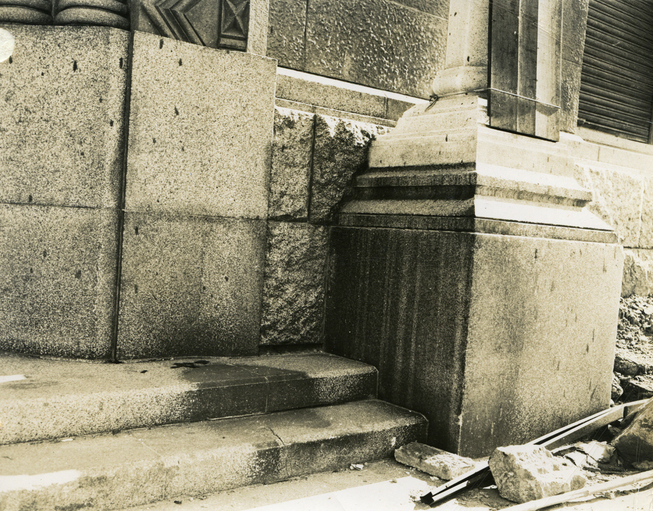
Deaths from radiation exposure continued to occur in Hiroshima and Nagasaki for seven to eight weeks following the dropping of the atomic bombs, and rebuilding the cities took approximately two years. However, the aftermath of the atomic bombs was still visible for long after.
As the structure of Sumitomo Bank had remained largely undamaged, the institution was rebuilt in the same spot. The Human Shadow Etched in Stone subsequently became a landmark, and employees took steps to protect it. In 1959, the bank put up a fence around where the human shadow was located, and eight years later covered it in tempered glass to prevent any further deterioration.
In 1971, Sumitomo Bank went through renovations and the steps were removed and donated to the Hiroshima Peace Memorial Museum. They’ve since undergone restoration to reverse some of the erosion that occurred, and are currently on display as a reminder of the effects of nuclear warfare.
More from us: Luck of Kokura: The Japanese City That Avoided Atomic Bombing – Twice
Want War History Online‘s content sent directly to your inbox? Sign up for our newsletter here!
“I think it is very important to keep in mind the consequences of the use of nuclear weapons,” said Alex Wellerstein, assistant professor of science and technology studies at the Stevens Institute of Technology in New Jersey.
“It is very easy to regard these weapons as tools of statecraft and not weapons of mass destruction. The nuclear shadows serve as a potent reminder of the human cost of [atomic weapon] use.”
